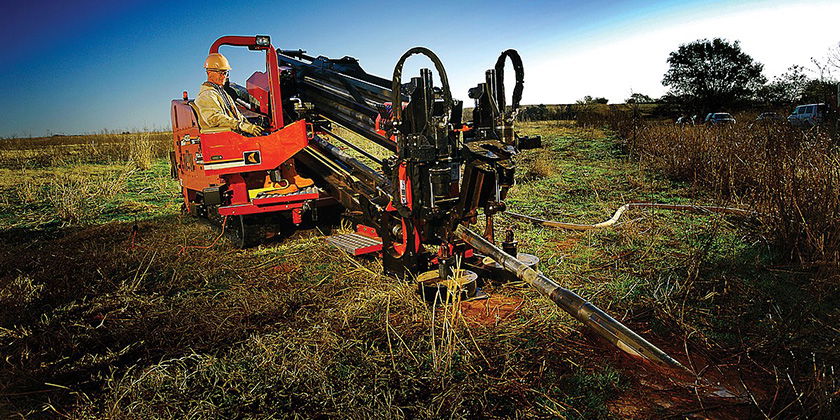Horizontal Drilling
Horizontal directional drilling (HDD) is a technique for installing pipes or utility lines below ground using a surface-monitored drilling rig that launches and places a drill string at a shallow angle to the surface and has tracking and steering capabilities. Compared with traditional open-cut construction, the HDD technology has the advantages of fast construction speed, small damage to the ground, and no effect on the use of existing pipelines. Considering these advantages, the HDD technology has been widely used in various pipelines installations.

For sand cobble stratum, the cementation between the particles is poor, which is a typically unstable stratum. Conventional HDD with single drill pipe often encounters accidents such as drill-burying and drill-sticking when drilling in the unstable stratum. Recently, HDD with dual drill pipes was used to install pipelines in the unstable stratum, and the effect was significant. The law of cuttings migration for HDD with dual drill pipes is still unclear. The law of cuttings migration is a key factor affecting the borehole cleaning. Borehole cleaning is an engineering challenge in horizontal directional drilling, which has received significant attention over the past 30 years, and scholars around the world have conducted substantial amounts of research on this topic. An unclean borehole, which can be caused by the stratum of a large cuttings bed due to extensive accumulation of cuttings in the borehole annulus, can result in high torque, high friction, and high dragging pressure on the drill pipe. In severe cases, the drilling tools may be broken, causing serious engineering accidents, such as sticking. Many controllable and uncontrollable factors are involved in the hole-cleaning process, such as the flow velocity in the borehole annulus, the displacement of the mud pump, the viscosity of the drilling fluid, the rotational speed of the drill pipe, and the diameter of the bit waterway.


